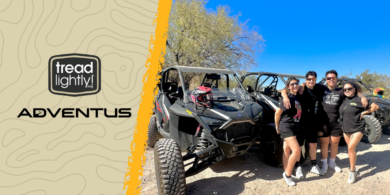Overcoming objections
 Just as important to listening to the customer when asking qualifying questions, we need to listen to our customers at the close.
Just as important to listening to the customer when asking qualifying questions, we need to listen to our customers at the close.
Last year we talked about asking our customers questions so that we had a roadmap of where to go with them. If all went according to plan, you got yourself to the close. Just as important to listening to the customer when asking qualifying questions, we need to listen to our customers at the close. The official term is “overcoming objections,” but we can call it “addressing objections, dealing with their concerns, etc.”
When a customer pushes back at you during the close (objects) what they are really telling you is that you have not answered all of their questions or fully educated them on your recommended solution based on their needs. You know their needs because you have ascertained them through thorough questioning. The proper response is to listen to their objection and formulate your response based on their feedback. Let’s look at a case study:
Billy Bob walks into Wicked Awesome Powersports (I’m from the Northeast) and is immediately greeted by salesman Snuffy. Through questioning, salesman Snuffy determines that Billy Bob is in the market for a new helmet, rides an adventure touring bike 10k miles a year, rates safety more important than price and is not overly impressed with his current pricepoint helmet. Salesman Snuffy fits Billy Bob with an Arai helmet that meets his needs only to see him turn pale when presented with a $700 price tag. Billy Bob pushes back on salesman Snuffy and says that although he boasted price was not an issue, he really didn’t think that helmets were that expensive.
Maybe salesman Snuffy didn’t ask the right questions here. Should he have asked Billy Bob what he wanted to spend? To me, when Billy Bob said that safety was more important than price he gave salesman Snuffy permission to find him the safest helmet he had. In any case salesman Snuffy has a couple different options here. He can:
- Ask Billy Bob at what pricepoint did he want to be? This will get a solution, but it will back salesman Snuffy into a corner. Billy Bob is in sticker shock, full blown fight or flight and he will most likely throttle way back to his safe zone. Once he replies with “$300 or so,” that is a hard number that will be difficult to deviate from and salesman Snuffy would have not earned the most profit dollars he could for the dealership with that close.
- Salesman Snuffy could help Billy Bob justify the expense. He could reply, “Well Sir, I understand $700 is a good amount of money. You said that you rode 10k miles a year and that comfort and safety are important to you. You will most likely have this quality helmet for 5 years which averages out to $140/year. That is probably less expensive than your motorcycle insurance which insures something that can be replaced. Would you agree with me that $140/year is worth insuring your head which cannot be replaced?”
Let’s assume that Billy Bob is starting to accept the salesman’s solution to his needs. He takes a quick peek online just to make sure that he is not overpaying for the helmet. He finds it for $70 cheaper online and although salesman Snuffy has invested his time and properly educated and fitted Billy Bob, he threatens to walk now that he has all the information he needs and order it online if salesman Snuffy cannot price match. Well, we know that Billy Bob is sold at $630 and it now becomes a challenge to keep as much margin for the dealership as possible.
My recommendation would be that he try the bundling method before going to the discount. While salesman Snuffy was working with his customer, he was also looking for other pieces to upsell or plant the seed for the future. Is the rider in regular jeans? Does he have GPS, a communicator or some hi vis? What condition are his jacket and gloves in? These are all potential items that salesman Snuffy can add to the bundle to make up for a discount and keep the margin in the deal. Salesman Snuffy’s response could be, “Ok, so I have to make $70 up to you. I noticed that you are wearing jeans while riding. I have these really cool Speed and Strength jeans with Kevlar lining and CE approved knee guards that will add protection to you on your rides. They retail for $129 but I will give them to you in this deal for $59 to close the gap. What size are you?” Assuming we have 45% margin in those jeans, they cost the dealership $71 and you just gave up $1 of profit instead of $70 and enhanced the rider’s experience with something they might not have bought anyway.
Personally, I like to stay away from jackets, gloves and helmets when bundling and stick to communicators, GPS devices and other items. I feel the likelihood of selling gloves, a jacket or a helmet is high and I don’t want to give that away. Other items I have a slimmer chance of selling so to use the bundle as an incentive for those types of items encourages sales and keeps you more profitable. Whatever method you choose is right as long as it works for you. The point I am trying to send home is the thought process and not necessarily a black and white canned response.
If you have an experience overcoming and objection and how you dealt with it that we all can learn from, please reply below in the comments section and share your story. We would all love to learn from your real world experiences! Happy Spring, happy selling!
Napoleon Tetreault is a sales representative with Tucker Rocky, an aftermarket PG&A distributor in the powersports industry. He works with powersports retailers on merchandising, profitability and management of the parts department as well as the education of dealership personnel. His experience includes being the GM of the largest indoor motocross facility in the US, owner/operator of a regional distribution company and current role with Tucker Rocky. He can be reached at:
Email: ntetreault@tuckerrocky.com
Website: www.trdealer.com (Consumer: www.powersportrider.com)








